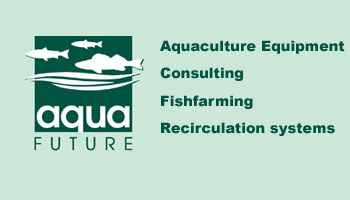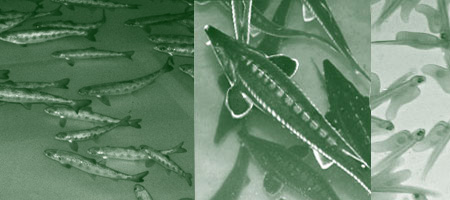Freshwater fish - Additional fish species can be supplied on advanced planning
| Arctic Charr (Salvelinus alpinus) We have stocks from both the descendants of the genuine domestic Arctic Charr from Alpine lakes, as well as from the Swedish Hornavan strain. There are considerable differences in regards to growth rate and size. Deliveries are only possible after long-term advanced planning. |
||
| Brown Trout (Salmo t. f. fario) - project In the meantime we sustain fish spawn for certain watercourse systems, whereby we assume that they come from a native source. We answer any queries as to the genetics in co-operation with qualified scientists. |
||
| Brown Trout (Salmo t. f. fario) - early For reproduction purposes we have a strain of very pleasantly marked trout at our disposal, which are normally mature by the beginning of or mid December. During the fish spawn selection process we pay special attention to the body shape, the intensive red spotting and the spawning time. |
||
| Brown Trout (Salmo t. f. fario) ) - late This stock also has red spotting, but does not reach spawning maturity until early February. It grows faster than the early strain. |
||
| Burbot (Lota lota) The fish spawn strain presently comprises approx. 60 fish with a body length of up to 50 cm. They originate from various watercourses. Husbandry and egg extraction no longer pose a problem. We are still working on an optimal method of rearing young fish and are confident that a large number of fry and fingerlings will be available in the not too distant future. |
||
| Grayling (Thymallus thymallus) In the past the fish spawn was captured in various rivers during the Spring season. They were then stripped and returned to the water. This method is no longer economically viable because of the cormorant problem. Nowadays spawn breeding is a relatively problem-free business. |
||
| Lake Trout (Salmo trutta f. lacustris) Descendants of native lake trout from the Alpine Lakes. Suitable as stock for Alpine lakes and quarries, as well as for dams, and seafood production (HVS-resistant). Lake trout tolerate a high water temperature, grow quickly and can achieve a weight of up to 20 kg. Very good restocking results have already been achieved. The hen trout usually reaches sexual maturity after about 4 years. |
||
| Pike (Esox lucius) We purposely do not keep fish spawn, but rather acquire eggs from certified disease-free territories. Depending on the clients' specification, the fish can be delivered either in ponds with plankton, or in basins with Artemia. |
||
| Roach ( Rutilus rutilus) Rudd (Scardinius erythropthalmus) Nowadays and for several reasons, in the meantime these fish are purposely produced in ponds. This method allows for a purer selection and good quality, i.e. providing a very high survival guarantee. In each case 1-, 2- and 3 summer fish are produced, which can only be delivered in the cold time of year. Orders well in advance are therefore recommended. |
||
| Salmon (Salmo salar) In addition to imported eggs, we are now also able to provide eggs from our own fish spawn. Following on from the successful start of several re-naturalisation projects, we have begun to produce a fish spawn stock for each watercourse system. Our aim is to produce spawn-producing hen salmon. The eggs are fertilised with the sperm of the freshly ascending males. |
||
| Wild Carp (Cyprinus carpio) A stock from the Rhine river is at our disposal. The fish weigh between 4 to 10 kg. Stock is optimised once a year and the fish are artificially augmented. Individual decisions on the correct stocking strategy, depending on the waters to be stocked, and other decisive factors should be made. |
||
| Zander/Pike-Perch (Stizostedion lucioperca) The targeted artificial insemination provides the basis for the delivery of eggs through to trappable fish. Depending on the desired size of the fish, long-term advanced planning and ordering is essential. From an ecological and economical standpoint, it has emerged that spring stocking should be carried out with "small zander", and the autumn stocking with 18 cm large fish. It should be observed that when suitable nourishment is available, the fish should be at least 10 cm long in October and at least 12 cm long in November. |

